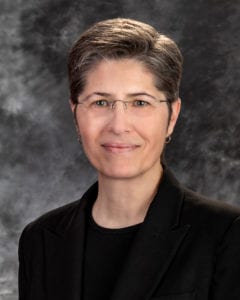

Emergency use
The City’s Water Reuse System would only be used during times of emergency, such as a Stage 4 water crisis.
Talking about it
The City has been talking about water reuse since the idea became a reality in Oklahoma in the 2000-teens. Here are links to just some of the articles published on the matter, one dating back to 2016:
https://www.cityofbartlesville.org/city-wins-top-epa-award-water-reuse-system/
https://www.cityofbartlesville.org/q-pools-set-open-may-29-water-reuse-status/
https://www.cityofbartlesville.org/water-faq-dredging-studies-reuse-crps/
https://www.cityofbartlesville.org/wastewater-plant-expansion-moves-forward/
https://www.cityofbartlesville.org/water-101-guide-to-citys-past-presentfuture-water-needs/
https://www.cityofbartlesville.org/water-conservation-top-priority-levels-fall/
https://www.cityofbartlesville.org/bartlesville-wins-water-60-excellence-award/
https://www.cityofbartlesville.org/city-nominated-water-60-award/
https://www.cityofbartlesville.org/council-oks-back-plan-water-project/
https://www.cityofbartlesville.org/council-oks-water-re-use-feasibility-report/
https://www.cityofbartlesville.org/caney-river-pump-station-work-start-soon/
https://www.cityofbartlesville.org/wp-content/uploads/2016/10/CIP-Needs-Report_10.3.16.pdf
What it is
The water reuse system involves the construction/installation of infrastructure that consists of a pump station at the City’s Waste Water Treatment Plant and an underground pipeline transporting the water to the Caney River just south of the County Road West 1500 bridge.
This will allow the City to utilize treated wastewater to augment the yield of the Caney River during periods of drought.
Following is a quote from Water Utilities Director Terry Lauritsen that has been used in City Beat several times because it spells out what water reuse, sometimes called water reclamation, is in very specific terms (emphasis added for this publication):
“We will pump treated wastewater approximately seven miles upstream of the Caney River Raw Water Intake and allow it to blend with existing river water, then send it to the water treatment plant for further treatment and, from there, to our water customers,” Lauritsen said.
The status of it
Numerous studies have been conducted on water reuse, and the infrastructure necessary to operate the system has been constructed and is ready to go. The system is currently undergoing the regulatory process through the Oklahoma Department of Environmental Quality. Also, improvements to the Waste Water Treatment Plant are required by ODEQ before the system can be used.
Something to think about
Not to intentionally ruin anyone’s day, but most of us are already drinking treated waste water that has been released into the water system upstream of us. Broken Arrow is drinking ours.
“A number of studies have been completed looking at the feasibility and safety of water reuse – including testing for contaminants not regulated by State and Federal agencies,” Lauritsen said. “These studies have shown that water reuse is not only safe and compatible with our water treatment system, but will improve the water quality of the Caney River at the raw water intake.”
To further ensure the safety of this water source, the City will run a pilot plant, starting in February 2024, that will test several different options of the reuse treatment process to demonstrate the performance of this system.
Hey, why don’t you do that?
Why haven’t you looked into making Hudson bigger?
Why doesn’t the City dredge Hulah Lake?
From Water Utilities Director Terry Lauritsen:
To increase the accessible water in Hudson Lake, the City would need to raise the water level. Hudson was built solely for water supply, and the lake level is controlled by a weir that is eight feet below the top of dam. By increasing the weir elevation for the lake to hold more water, we would also need to increase the height of the dam and would have to build a separate anchoring/foundation system so that this increase in height would be structurally sufficient to impound this additional water.
While the City has not done a detailed cost estimate to modify the dam, conceptual estimates to raise the dam three feet would be in the $5 million to $10 million range. The elevation increase would increase the storage by around 1,000 acre feet. As a comparison, the water surface elevation increase in Hulah would increase water storage by 29,130 acre feet, and the conceptual cost estimate for this option is $12.5 million.
Dredging Hulah Lake is an option that the City has explored and certainly is not off the table. However, dredging the lake would require us to dispose of the sediment in a way that is compatible with State and Federal regulations pertaining to the disposal of hazardous waste, as the sediment almost likely contains trace amounts of mercury, as most water sources do.
The estimated cost to do this is in the ballpark of $150 million. And if we did this, the anticipated yield from the lake would be 7-8 million gallons (mdg) per day.
When we look at this, we compare it to reallocating flood control to water conservation at the lake, which is what the U.S. Army Corps of Engineers’ Planning Assistance to States Study in 2007 showed was our best option. Reallocation would cost an estimated $10 million and would yield 10 mgd.
So it’s not that Hudson can’t be made bigger, and it’s not that Hulah can’t be dredged. It’s just that there are much more affordable options that would result in a better and more cost-effective outcome.
